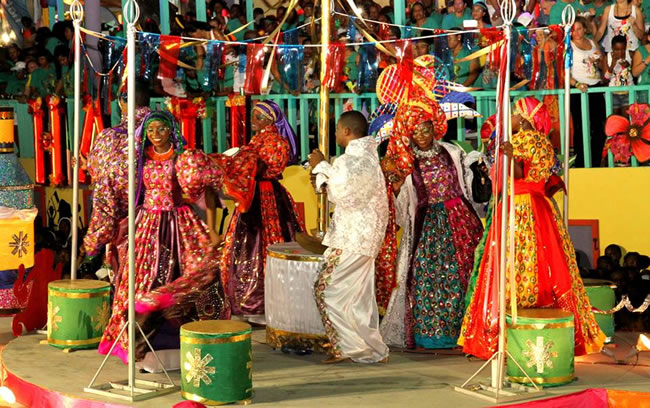ADVERTISEMENT

The Dress - Haiti Kanaval Picture 2015
Carnival in Specific Countries Compared to Haiti
The festival season varies from country to country and city to city. Some traditions consider Mardi Gras during the entire period between Epiphany or Twelfth Night and Ash Wednesday. While others treat the final three-day period before Ash Wednesday as the Mardi Gras. In some American cities, it is now called "Mardi Gras Day". Carnival first came to Trinidad (as "J'Ouvert") in the Caribbean with the French Catholic plantation slave owners during the 1700s. Today it is very famous for the carnival in the Caribbean and Trinidadians are famous for transplanting their carnival culture to new places. Perhaps Mardi Gras is most majestically celebrated in New Orleans and Rio de Janeiro. In Mexico, it is called as "Martes de Carnaval". Carnival in Spain is a charming event where everyone participates even those with little means; it is well known for its vibrant costumes and masks. Although the Carnival celebration in Spain is not as esthetically beautiful as in Venice nor as over the top and dance orientated as in Brazil (Rio).
This Catholic festival has been imported to Haiti mainly by the early European settlers. Haitian carnival is, however, heavily influenced by its local customs and rituals like Voodoo and Haitian music. Music always remain the central part of the celebration. Participants perform comedy acts often satirizing political topics. People take part in parade floats where music systems are set up on trucks. It is celebrated in grand scale in the capital city and Jacmel and on certain smaller scales in smaller Haitian provinces. Jacmel is the art capital of Haiti. The artisans from this town make beautiful papier-mâché masks and costumes that represent religious or ghoulish creatures and often mocked political figures. Carnival is a good source of revenue to the country's economy.
Read more about kanaval, kanaval-2015, Carnival or Kanaval

 Hotel Beck in Cap-Haitien, Haiti
Hotel Beck in Cap-Haitien, Haiti  Inauguration Lycée Jean-Louis Dulciné in Gris-Gris, Haiti
Inauguration Lycée Jean-Louis Dulciné in Gris-Gris, Haiti  President Florvil Hyppolite Haiti's famed Iron Market
President Florvil Hyppolite Haiti's famed Iron Market  Commissioner Frantz Pierre indicted for accepting bribes
Commissioner Frantz Pierre indicted for accepting bribes  Haitiano-Japanese Naomi Osaka wins the US Open against Serena...
Haitiano-Japanese Naomi Osaka wins the US Open against Serena...  Jean Henry Céant deposited documents in Parliament for...
Jean Henry Céant deposited documents in Parliament for...  Philippe Vorbe entered world football Hall of Fame, CONCACAF
Philippe Vorbe entered world football Hall of Fame, CONCACAF  Paul Eugène Magloire, born in Quartier Morin
Paul Eugène Magloire, born in Quartier Morin 



